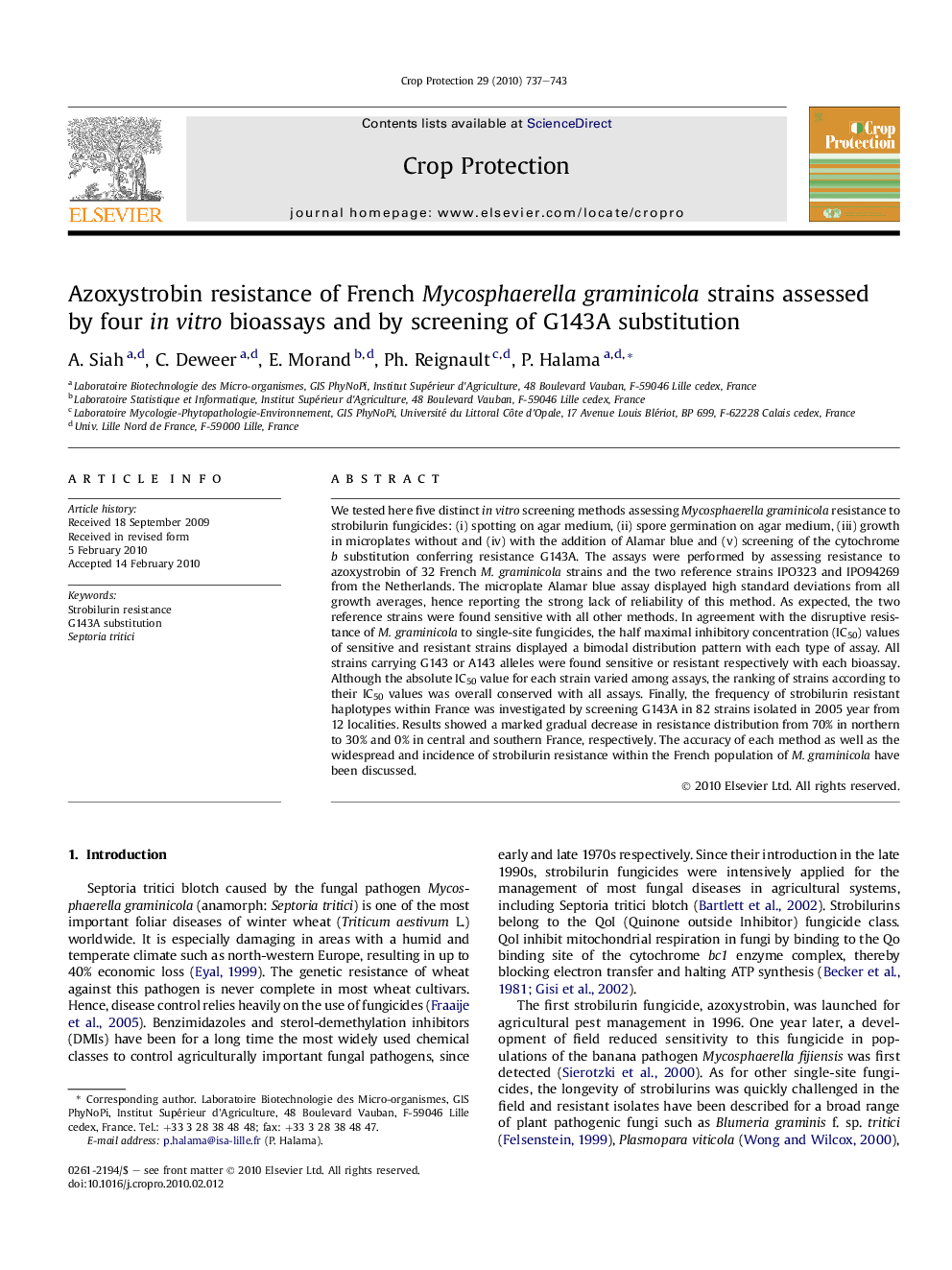| Article ID | Journal | Published Year | Pages | File Type |
|---|---|---|---|---|
| 4506799 | Crop Protection | 2010 | 7 Pages |
We tested here five distinct in vitro screening methods assessing Mycosphaerella graminicola resistance to strobilurin fungicides: (i) spotting on agar medium, (ii) spore germination on agar medium, (iii) growth in microplates without and (iv) with the addition of Alamar blue and (v) screening of the cytochrome b substitution conferring resistance G143A. The assays were performed by assessing resistance to azoxystrobin of 32 French M. graminicola strains and the two reference strains IPO323 and IPO94269 from the Netherlands. The microplate Alamar blue assay displayed high standard deviations from all growth averages, hence reporting the strong lack of reliability of this method. As expected, the two reference strains were found sensitive with all other methods. In agreement with the disruptive resistance of M. graminicola to single-site fungicides, the half maximal inhibitory concentration (IC50) values of sensitive and resistant strains displayed a bimodal distribution pattern with each type of assay. All strains carrying G143 or A143 alleles were found sensitive or resistant respectively with each bioassay. Although the absolute IC50 value for each strain varied among assays, the ranking of strains according to their IC50 values was overall conserved with all assays. Finally, the frequency of strobilurin resistant haplotypes within France was investigated by screening G143A in 82 strains isolated in 2005 year from 12 localities. Results showed a marked gradual decrease in resistance distribution from 70% in northern to 30% and 0% in central and southern France, respectively. The accuracy of each method as well as the widespread and incidence of strobilurin resistance within the French population of M. graminicola have been discussed.
